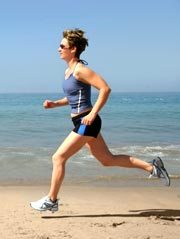
Where you live could be a huge factor in your body weight. Studies have shown that people with lower body mass tended to live in neighborhoods that allowed them more access to walkable living, including being able to walk/bike to work or to their local fruit and veggie shops. Similarly, there was a correlation between less "walkability" and increased body mass, or total body weight.
This could be related to the fact that areas related to increased weight caused people to drive to every single one of their destinations. Think of the average person who drives 5 or 10 minutes for a gallon of milk or a fast food meal.
Have you ever told someone you were walking a mile to get a healthy meal? You would most likely get some strange feedback, because most people could never imagine seeing an actual human being walking to eat instead of driving! Truly, the "drive for ease and convenience" in the form of one-stop shopping or fast food centers, is taking a huge toll on the waistline.
Is Obesity An American Epidemic?
The U.S. Centers for Disease Control and Prevention estimate that 6 out of 10 people in the United States are either obese or overweight. Weight related diseases such as heart disease and high blood pressure place a huge strain on the American health care system.
In a recent report from the National Health and Nutritional Survey, it was stated that nearly two out of three U.S. citizens "has a serious weight concern," and that this number has shown a steady yearly increase over the past ten years [1].
Similarly, many forms of traditional natural medicine, such as Chinese medicine and Ayurveda, clearly state that all disease (especially obesity) originates in the digestive system.
Considering this timely wisdom, it is easy to see why being overweight causes so much suffering, both on the individual, and the planet. With all of my research, I also have traced the root cause of disease and obesity to the toxic overload absorbed through the digestive tract as well as a congested liver.
How Close Do You Live to Fast-Food Shops?
Studies also show a correlation between how close you live to healthy versus unhealthy food shops, and being overweight. If you live near fast-food, convenience stores or grocery stores that carry mainly canned and processed foods, you are also more likely to be overweight. People who live closer to healthy stores that specialized in organic fruits and vegetables, whole grains and other "live" food choices also tended to be "walker" friendly.
Gender-wise, men that lived in neighborhoods that were more walker friendly weighed an average of ten pounds less than men that lived in non-walker friendly areas. Women had similar results, with walker-friendly women weighing six pounds less.
Scientists also found that older neighborhoods were designed to allow residents to walk to everything they needed, including banks, markets, parks and diversion activities. It seems that the older your neighborhood, the less likely you are to be obese!
Other similar surveys cite San Francisco, San Diego, Honolulu, Seattle and Colorado Springs as the country's healthiest "skinny" cities. In 2008, Houston came in first as the "fattest city in the United States," with Chicago, Philadelphia, St. Louis and Detroit also leading the way as meccas for unhealthy living [2]. But what makes a city "skinny" or "fat?"
Experts believe that increased access to outdoor fitness activities, the availability of fresh and organic fruit and vegetables, lower incidences in smoking and drinking, good water and air quality, and increased availability of community spaces, such as parks, led to decreased body weight in residents. Another important factor to consider was the amount of "car-time" people were subjected to daily. Long commutes to work were found to also increase the amount of overweight and sedentary residents.
How Can We Improve Our Walkability?

Of course, most people don't have the luxury of moving to a clean wooded area out of town, but you can make smart decisions when investing in a home or neighborhood. Consider choosing a home or apartment in a part of town that has sidewalks. Even if you don't live in Manhattan, you can still take a walk around your neighborhood.
Join community organizations that encourage walkability, local small businesses and farmer's markets. If you can't walk to your local farmer's market, grocery store or hardware shop, try biking.
Currently, the U.S. Congress spends almost $60 billion dollars annually on transportation, with almost 85% of those tax payers dollars going towards expanding or maintaining highways. Only 1.5% of those funds goes to support biking and walking (this equates to about $3 per U.S. citizen yearly). It is up to us to encourage our policy makers to help lower our dependency on oil, increase urban walkability and lower body weight by funding projects for walking and biking.
3 Easy Tips For Successful Weight Loss
- A good hobby to take up is gardening. It brings you in touch with nature, burns calories and provides you with fresh organic food.
- When you drive to shop, park far away from the entrance and walk
- Use the stairs instead of the elevator whenever possible
Finally, if you are interested in finding out "How Walkable Your City or Town Is," check out this great site - WalkScore.com
References (2)
- Mokdad AH, Bowman BA, Ford ES, Vinicor F, Marks JS, Koplan JP. The Continuing Epidemics of Obesity and Diabetes in the United States. JAMA. 2001;286(10):1195-1200. doi:10.1001/jama.286.10.1195.
- Men's Fitness. 2009 Fattest Cities:#7 El Paso, TX. Men's Fitness Magazine. 2009
†Results may vary. Information and statements made are for education purposes and are not intended to replace the advice of your doctor. If you have a severe medical condition or health concern, see your physician.







